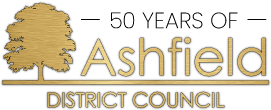Air quality
We undertake environmental air quality monitoring in order to comply with the legislative requirements of the Environment Act 1995. Ashfield has also been designated a smoke control area as outlined by the Clean Air Act 1993.
Smoke from chimneys
Smoke Control Areas are not smoke-free zones, but specifically concern smoke from chimneys not (as many people assume) from bonfires.
The Clean Air Act allows the creation of Smoke Control Areas to improve air quality by the burning of cleaner fuels. In order to maintain the improvements in air quality that have been achieved in Ashfield it is important that everyone continues to comply with this legislation.
The burning of fuels on heating appliances in a Smoke Control Area
Clean fuels that should burn without giving rise to smoke such as gas and fuel oil, as well as electric heating, can be used in a Smoke Control Area.
Solid fuels can also be used although as it is an offence to cause smoke from a chimney in a Smoke Control Area you should make sure that you use an authorised "smokeless" fuel. These fuels are often referred to as "smokeless fuels" and as they burn with minimum smoke they can be burnt on open grate fires.
Open fires
- smokeless fuel only. Burning wood or coal is an offence
Closed room heaters / stoves (other than exempt appliances)
- smokeless fuel only. Burning wood or coal is an offence. Solid fuel heating appliances such as room heaters/closed appliances are often designated to burn specific authorised fuels and examples of these include the Parkray Consort/Chevin, the Charnwood and the Trianco Redfyre. Typical authorised smokeless fuels include Homefire, Phurnacite, Sunbrite and Blazebrite and details of them and their proper use should be available from all reputable coal merchants.
Exempt appliances
- may burn wood or coal but must be to the manufacturer's recommendation.
Exempt heating appliances
Any coal, wood, or other fuel which is not authorised smokeless fuel, used in a Smoke Control Area must be burnt on an exempt heating appliance.
These appliances are designed to burn off or "eat" their own smoke. Examples that burn coal include "smokeaters" such as the Parkray Coalmaster and the Coalking and Triancomatic boilers. Examples that burn wood include the Clearview Stove or Jotul.
Note the type of coal, wood or other fuel that must be burnt on an exempt heating appliance so that it does not cause smoke is specified by the manufacturer and the manufacturer's recommendations must be followed.
If you are thinking of buying an appliance to burn a fuel that is not an authorised smokeless fuel always check the appliance is exempt for use in a Smoke Control Area. Many closed stoves, cooking ranges and free-standing pot belly stoves are not exempt and only authorised "smokeless" fuels should be burnt on them.
Light the heating appliance so as to minimise smoke
The way in which the fuel is lit must cause minimum smoke. Sticks and paper or firelighters are both accepted methods of lighting solid fuel.
Delivery of fuel in a Smoke Control Area
It is an offence for any person or company to obtain or deliver coal, wood or any other fuel which is not authorised smokeless fuel for use on an appliance which is not exempt for use in a Smoke Control Area.
